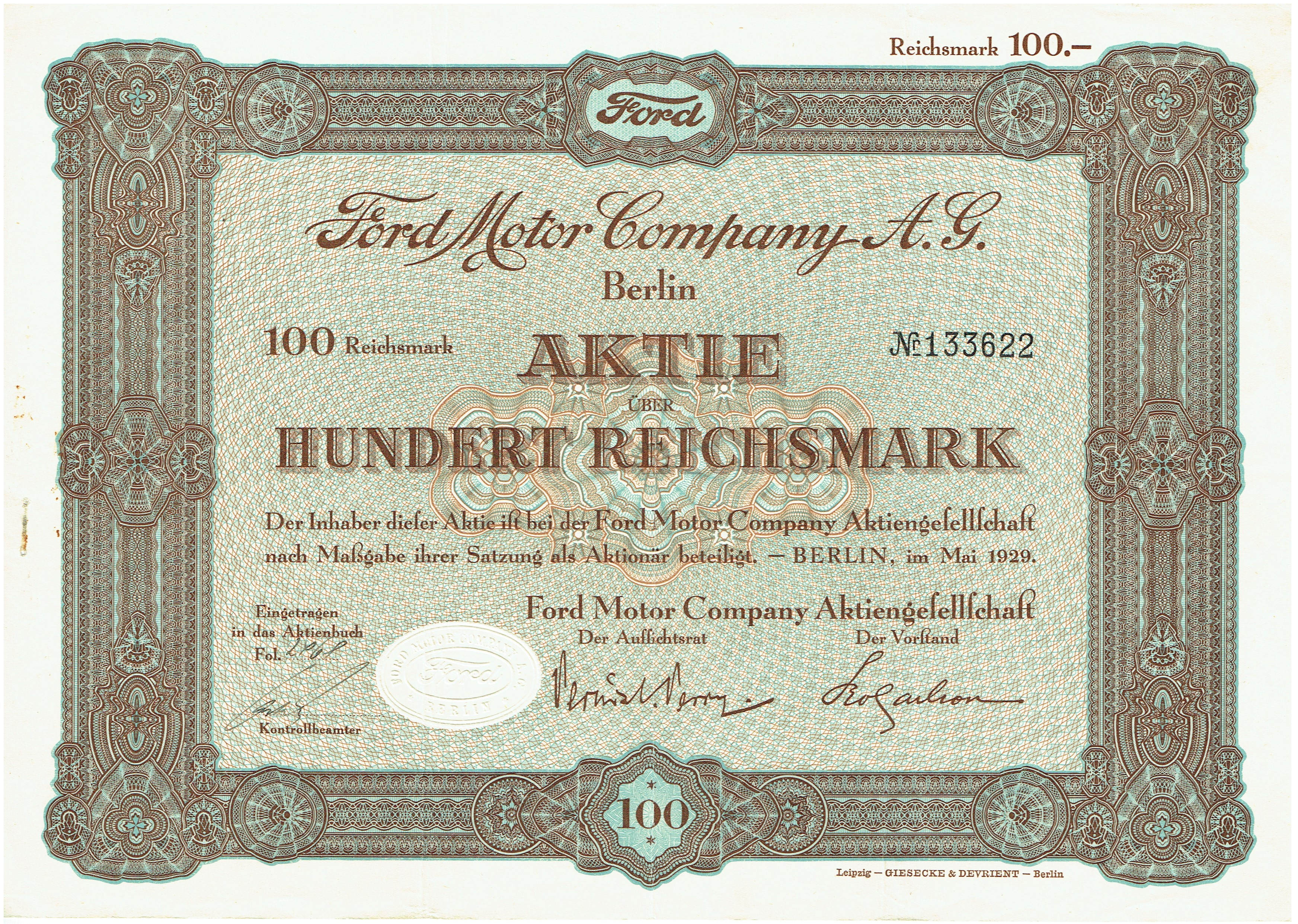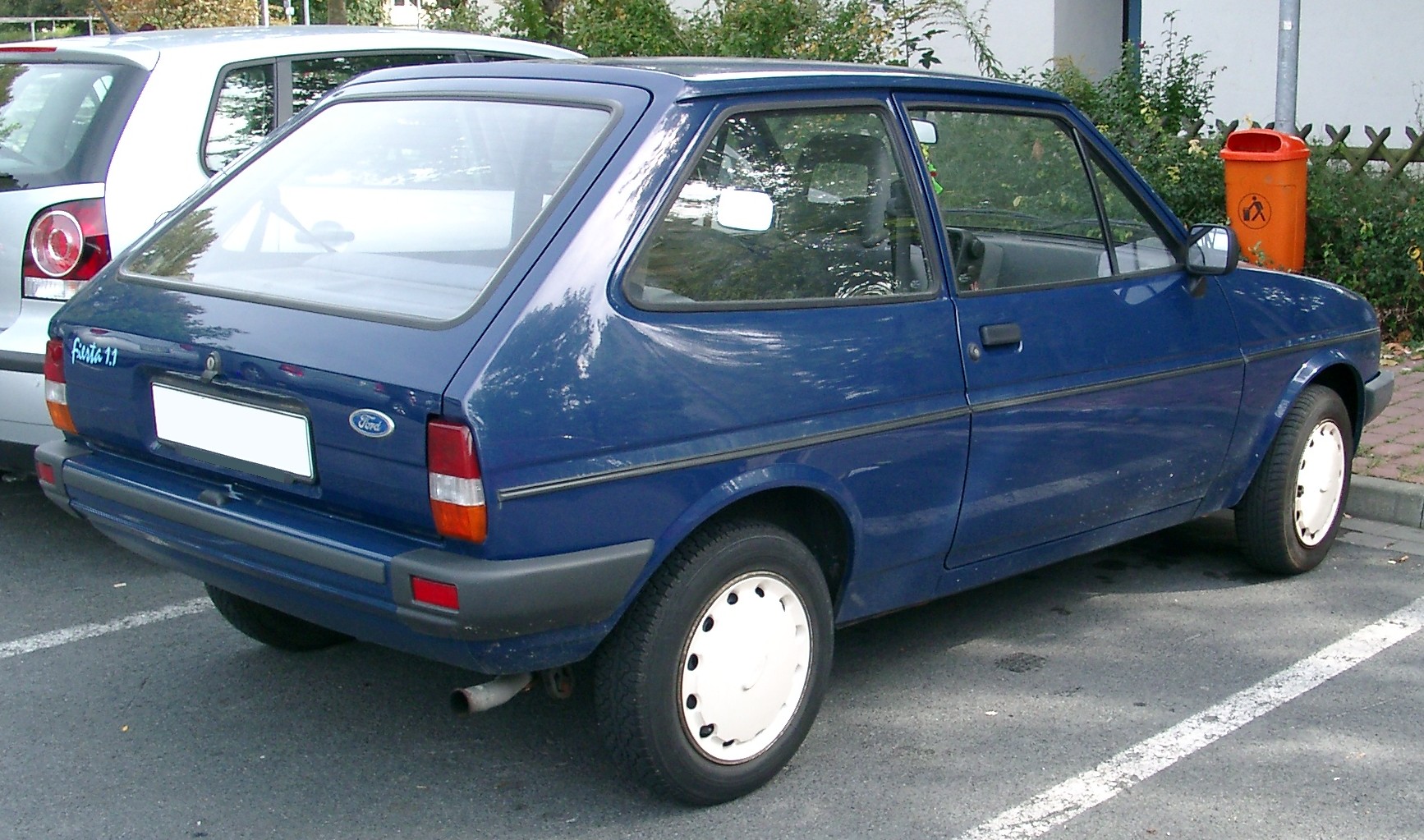|
Ford Taunus
The Ford Taunus is a family car manufactured and marketed by Ford Germany throughout Europe. Models from 1970 on were manufactured using the same basic construction as the Ford Cortina MkIII in the United Kingdom, and later on, the two car models were rebadged variants of each other, differing primarily in their steering wheel placement. Introduced in 1939, and marketed over numerous generations through model year 1994, the model line was named after the Taunus mountain range in Germany. __TOC__ Taunus G93A (1939–1942) / G73A (1948–1952) The Ford Taunus G93A was a development of the Ford Eifel, and used the same 1172 cc four cylinder engine, but in a longer chassis and a streamlined body. It was the first German Ford to have hydraulic brakes. First introduced in 1939, production was halted in 1942 due to the war. Production recommenced in November 1948 after the British Occupation had ended. In total, 7,128 pre-war Taunuses (G93A) were made, including estate cars ... [...More Info...] [...Related Items...] OR: [Wikipedia] [Google] [Baidu] |
Ford Taunus P4
The Ford Taunus 12M is a small family car produced by Ford Germany from September 1962 to August 1966. The Taunus 12M name had been used for the car's predecessor and would be used for subsequent Ford models, which is why the 12M introduced in 1962 is often retroactively identified as the Ford Taunus P4. It was the fourth newly-designed German Ford to be launched after the Second World War, war and was known within the company as Ford Project 4 (P4) or the Ford Taunus P4. It was the first Ford with front-wheel drive. The car was not designed by Ford of Germany but by its US parent company, and was to be built and sold in the US as the Ford Cardinal — an all-American competitor to the Volkswagen Type 1, Volkswagen. US production plans were later cancelled, and in 1960 Ford of Germany received a modern, fully developed new design which they adapted for German conditions as a replacement for their own outdated Ford Taunus P1. North American design The Ford Taunus P1, 1952 Ford ... [...More Info...] [...Related Items...] OR: [Wikipedia] [Google] [Baidu] |
Ford Germany
Ford-Werke GmbH is a German-based car manufacturing company headquartered in Cologne, North Rhine-Westphalia. It is a fully-owned subsidiary of American Ford Motor Company. It operates two large manufacturing facilities in Germany, a Cologne Body & Assembly, plant in Cologne and a Saarlouis Body & Assembly, plant in Saarlouis, and serves as a major hub for Ford's presence in the European markets. Berlin origins The earliest presence of the Ford Motor Company in Germany was a parts operation set up in Hamburg in 1912. At the end of 1924 the Ford Motor Company of the U.S. established a sales office in Berlin which at the start of 1925 received a permit to import 1,000 tractors. In 1920 the Weimar Republic, government had imposed a tariff so high that it amounted to a prohibition against importing foreign automobiles, but this was reversed in October 1925. The move had evidently been anticipated by Ford, since on 18 August 1925 the ''Ford Motor Company Aktiengesellschaft'' had be ... [...More Info...] [...Related Items...] OR: [Wikipedia] [Google] [Baidu] |
Ford Taunus P1
The Ford Taunus P1 is a small family car which was produced by Ford Germany from 1952 until 1962. It was marketed as the Ford Taunus 12M, and, between 1955 and 1959, as the larger-engined Ford Taunus 15M. The company produced a succession of Ford Taunus 12M models until 1970, as the name was applied to a succession of similarly sized cars, but the first Taunus 12M models, based on the company's Taunus Project 1 (P1), remained in production only until 1962. In that year the Taunus P1 series was replaced by the Taunus P4 series. At its launch, the car placed Ford ahead of the pack, being unusually modern in terms of the bits that showed. It was one of the first new cars to appear in Germany since before the war, and featured a radical ponton format "three box" body as pioneered (at least in Germany) by the 1949 Borgward Hansa 1500. The three-box car body format would soon become mainstream, but when the Ford Taunus 12M appeared in 1952 competitor manufacturers including Opel, Volks ... [...More Info...] [...Related Items...] OR: [Wikipedia] [Google] [Baidu] |
Ford Fiesta
The Ford Fiesta is a supermini car that was marketed by Ford from 1976 to 2023 over seven generations. Over the years, the Fiesta has mainly been developed and manufactured by Ford's European operations, and had been positioned below the Escort (later the Focus). Ford had sold over 15 million Fiestas from 1976 to July 2011, making it one of the best-selling Ford nameplates behind the Escort and the F-Series. It has been manufactured in the United Kingdom, Germany, Spain, Brazil, Argentina, Venezuela, Mexico, Taiwan, China, India, Thailand, and South Africa. The Fiesta was discontinued in 2023, after over 22 million units had been made. The final Ford Fiesta rolled off the production line on 7 July 2023. Development The Fiesta was originally designed by the project "Bobcat" team headed by Trevor Erskine (not to be confused with the badge-engineered Mercury variant of the Ford Pinto) and approved for development by Henry Ford II in September 1972, shortly after the ... [...More Info...] [...Related Items...] OR: [Wikipedia] [Google] [Baidu] |
Ford Corcel
The Ford Corcel ( "charger" or "steed" in Portuguese) is a family car which was sold by Ford do Brasil in Brazil, Chile, Uruguay, Paraguay and Venezuela. It was also assembled in Venezuela (along with the upscale Del Rey derivative). The French-influenced styling of the Corcel was unique to Brazil until late 1977. From this year, the redesigned Corcel II (as it was originally sold) bore a strong resemblance to the European Ford Escort and Ford Cortina of same era, but its Renault underpinnings remained the same. The Corcel was eventually replaced by the Del Rey, which was originally introduced as a better equipped version of the Corcel. Origins The Corcel's origins lay in the Renault 12. Willys-Overland's Brazilian operations included manufacturing the Renault Dauphine as the Willys Dauphine/Gordini/1093/Teimoso. Plans were underway to replace this outmoded range with a new car based on the upcoming Renault 12, internally referred to as "Project M". When Willys do Brasil was ... [...More Info...] [...Related Items...] OR: [Wikipedia] [Google] [Baidu] |
Ford Cardinal
Ford commonly refers to: * Ford Motor Company, an automobile manufacturer founded by Henry Ford * Ford (crossing), a shallow crossing on a river Ford may also refer to: Ford Motor Company * Henry Ford, founder of the Ford Motor Company * Ford Foundation, established by Henry and Edsel * Ford Australia * Ford Brasil * Changan Ford * Ford Motor Company of Canada, Canadian subsidiary * Ford of Britain * Ford of Europe, the successor of British, German and Irish subsidiaries * Ford Germany * Ford India * Ford Lio Ho * Ford New Zealand * Ford Motor Company Philippines * Ford Romania * Ford SAF, the French subsidiary between 1916 and 1954 * Ford Motor Company of South Africa * Fordson, the tractor and truck manufacturing arm of the Ford Motor Company * Ford Vietnam * Ford World Rally Team (aka Ford Motor Co. Team prior to 2005), Ford Motor Company's full factory World Rally Championship team (1978–2012) * Ford Performance * Henry Ford & Son Ltd, Ireland * List of Ford vehicles, model ... [...More Info...] [...Related Items...] OR: [Wikipedia] [Google] [Baidu] |
Sedan Delivery
A panel van, also known as a delivery van (United Kingdom), blind van, car-derived van or sedan delivery (United States), is a small cargo vehicle with a passenger car chassis, typically with a single front bench seat and no side windows behind the B-pillar. Panel vans are smaller than panel trucks or cargo vans, both of which use body-on-frame truck chassis. As they are derived from passenger cars, the development of panel vans is typically closely linked with the passenger car models upon which they depend. North American panel vans were initially based upon the two-door station wagon models, while Europe's narrower roads dictated that panel vans utilize the smaller donor chassis of subcompact cars in that market. In Australia, panel vans were a development of the ute, a small pickup truck based on a passenger car chassis, e.g. Holden Ute, often using the longer wheelbase of a station wagon chassis. Origins Panel vans were a well-established body type by the end of the 19 ... [...More Info...] [...Related Items...] OR: [Wikipedia] [Google] [Baidu] |
Station Wagon
A station wagon (American English, US, also wagon) or estate car (British English, UK, also estate) is an automotive Car body style, body-style variant of a Sedan (automobile), sedan with its roof extended rearward over a shared passenger/cargo volume with access at the back via a third or fifth door (the liftgate, or Trunk (automobile)#Tailgate, tailgate), instead of a trunk/boot lid. The body style transforms a standard Three-box styling, three-box design into a Three-box styling#One-box and Two-Box design, two-box design—to include an Pillar (car), A, B, and C-pillar, as well as a D-pillar. Station wagons can flexibly reconfigure their interior volume via fold-down rear seats to prioritize either passenger or cargo volume. The ''American Heritage Dictionary'' defines a station wagon as "an automobile with one or more rows of folding or removable seats behind the driver and no luggage compartment but an area behind the seats into which suitcases, parcels, etc., can be loaded ... [...More Info...] [...Related Items...] OR: [Wikipedia] [Google] [Baidu] |
Sedan (car)
A sedan (American English) or saloon (British English) is a automobile, passenger car in a three-box styling, three-box configuration with separate compartments for an engine, passengers, and cargo. The first recorded use of ''sedan'' in reference to an automobile body occurred in 1912. The name derives from the 17th-century Litter (vehicle), litter known as a sedan chair, a one-person enclosed box with windows and carried by porters. Variations of the sedan style include the close-coupled sedan, club sedan, convertible sedan, fastback sedan, hardtop sedan, notchback sedan, and sedanet. Definition A sedan () is a car with a closed body (i.e., a fixed metal roof) with the engine, passengers, and cargo in separate compartments. This broad definition does not differentiate sedans from various other car body styles. Still, in practice, the typical characteristics of sedans are: * a Pillar (car), B-pillar (between the front and rear windows) that supports the roof; * two rows of s ... [...More Info...] [...Related Items...] OR: [Wikipedia] [Google] [Baidu] |
Auto, Motor Und Sport
''Auto Motor und Sport'', (stylized in all lowercase) and abbreviated AMS or AMuS, is a German automobile magazine. It is published fortnightly by Motor Presse Netzwerk's subsidiary Motor Presse Stuttgart, a specialist magazine publisher that is 59.9% owned by the publishing house Gruner + Jahr. History ''Motor und Sport'' was initially published in 1923 in Pößneck, Germany. It was founded by and Felicitas Von Reznicek. Pullig began his career by racing motorcycles in 1912 at the Nurburgring. Pullig was also an aviation pioneer (his first flight was at what is now Hangelarer Airport on 17 July 1909) and became a flight instructor in 1913. He served as a soldier in WWI and WWII. After the latter, Pullig became an acclaimed author, writing over 30 novels. Notable works include ''Lockfuhrer Lund'' (1940), ''Du bist nicht Sylvia'' (1939) and ''Der Held seiner Liebe''. In the early 1950s, Pullig was a prototype test driver for Daimler Benz and Opel car prototypes in Frankfurt ... [...More Info...] [...Related Items...] OR: [Wikipedia] [Google] [Baidu] |





